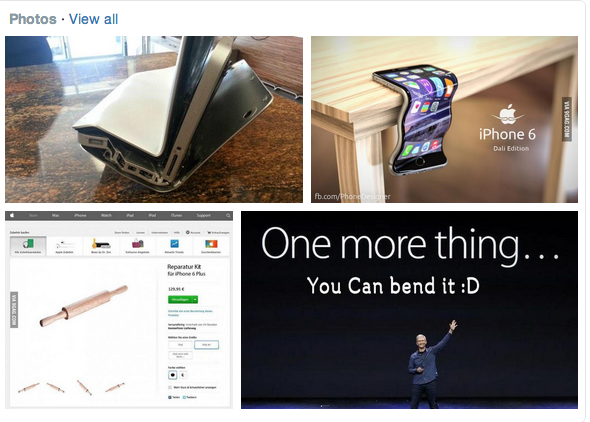It seems recently there has been a string of brand shaming in the media. While this isn’t new, it is shocking to see how poorly businesses are handling their brands. The way companies have responded, and sometimes not responded has been enlightening about how to respond to negative publicity… incorrectly. Using the insights provided, here is a quick guide on how not to handle negative publicity.
Keep a Straight Face Approach
This approach has been seen most recently. Apple enthusiasts have been bent out of shape about the discovery that the iPhone 6 can bend out of shape. The bending phone has become a search engine hit and has a trending hashtag.
Fans and foes alike have responded comically, some trying frantically to excuse the flaw and others taunting Apple enthusiasts. Apple however has chosen not to respond, and is rather focusing on the products benefits.
Ignore it and It Might Go Away
This is similar to pulling a straight face, except it can be expected to last for longer, perhaps even a decade. General Motors knew of a fault in over 28 million cars which could prevent the airbags from inflating. Although GM issued for a recall of the cars it was long overdue. The fault had been known to GM for at least a decade prior to the recall. They endangered millions of lives for the sake of avoiding negative publicity, only to land in even worse publicity.
A better solution would have been following Whittakers example. Although chocolates and cars are entirely different markets, I will compare them for the underlying theme. As soon as Whittakers discovered a batch of chocolates had plastic remnants, they took to social media to warn followers. Much less risky to consumers but handled remarkably better.
Play the Blame Game
Everyone remembers the infamous BP oil spill of 2010. A lot of what people remember about the spill was the incredibly poor handling of the disaster. Firstly BP attempted to shift the blame to the Gulf of Mexico. In the same report, they also attempted to blame large multinationals Transocean and Halliburton.
Photoshop Your Way Out of it
Although this certainly isn’t a common tactic used by misguided businesses, it is memorable when it happens. Also following the BP oil spill, BP grafted images of the underwater camera feed onto blank computer screens. Ashley Bruan from Grist explained this best, “Photoshopping to make things look better for yourself is anything but innovative… if you cut corners you’ll probably get caught and wish you could Photoshop yourself out of an awkward PR situation.”
